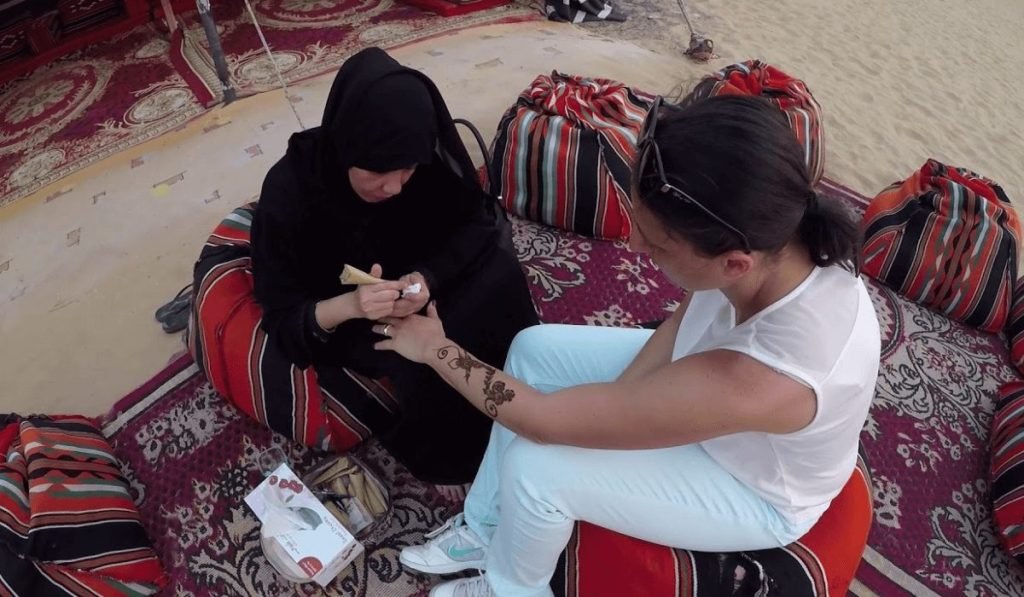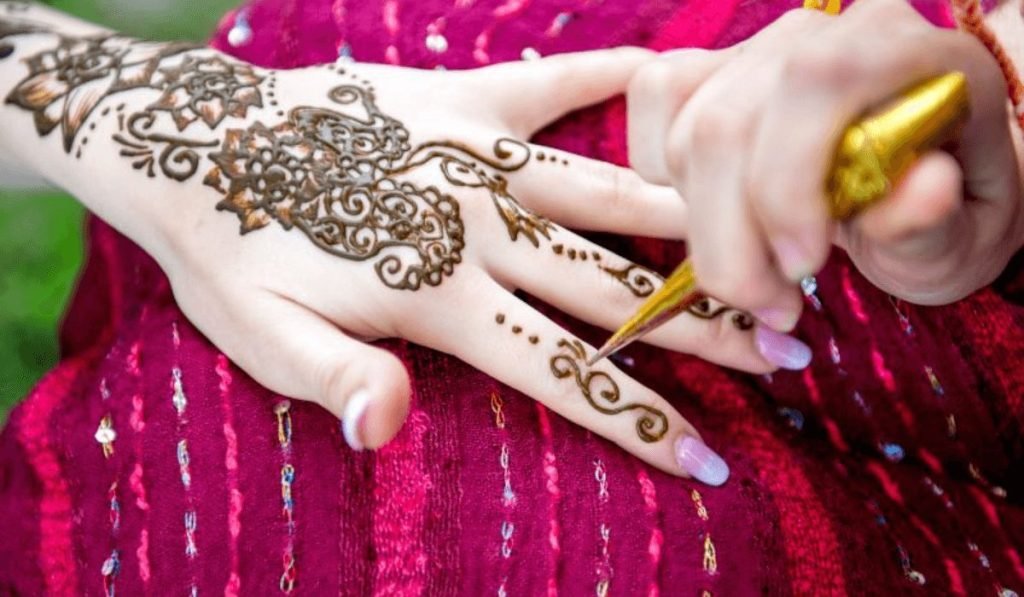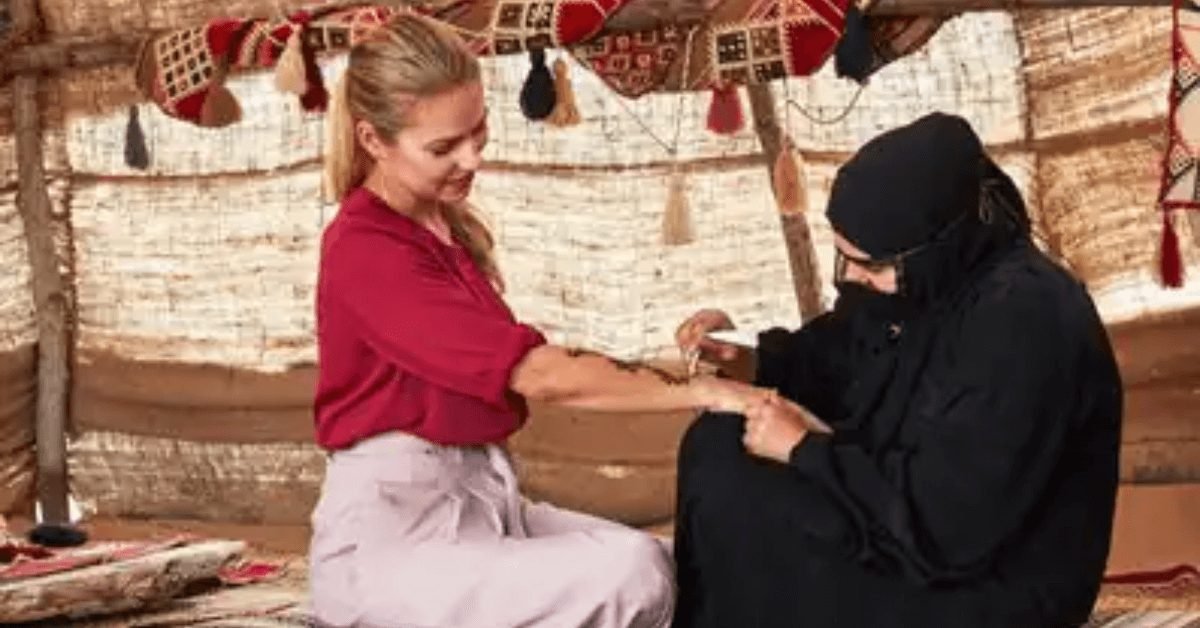Welcome to the world of henna painting, where artistry meets cultural heritage. In the heart of Dubai’s Desert Safari, henna painting offers a captivating and authentic cultural experience that draws travelers from around the globe. This article will explore the origins of henna, delve into Arabian henna culture, and provide an in-depth guide to henna painting in Desert Safari Dubai. Discover the enchanting symbolism, intricate patterns, and transformative power of henna art.
The Origins of Henna

Henna, a plant-based dye, has a rich historical legacy rooted in ancient civilizations. From Egypt to India, henna has been used for centuries in diverse cultures for body adornment, celebration, and rituals. The natural dye obtained from the henna plant leaves is known for its cooling properties and has been revered for its ability to leave a beautiful reddish-brown stain on the skin.
Henna in Arabian Culture
Arabian culture has a deep appreciation for henna and its artistry. Henna plays an integral role in celebrations, weddings, and festivals, where it is used to adorn the hands and feet of both women and men. Arabian henna designs often feature intricate patterns, floral motifs, and geometric shapes, each carrying its own symbolism and meaning. Explore the significance of henna in Arabian culture and how it is an expression of joy and beauty.
Desert Safari Dubai: An Overview
Desert Safari Dubai is an oasis of cultural experiences in the heart of the Arabian Desert. Beyond its thrilling dune bashing and camel rides, Desert Safari offers an immersive journey into the Bedouin way of life, showcasing traditional Arabian hospitality, music, dance, and, of course, henna painting. It is a must-visit destination for those seeking an authentic cultural experience.
Cultural Immersion in Desert Safari Dubai
Immerse yourself in the rich Arabian heritage as you step into the world of Desert Safari Dubai. Experience the warmth of Bedouin hospitality, discover their traditional lifestyle, and gain insight into their customs and traditions. Engage with locals, savor traditional cuisine, and partake in the joyous festivities. Desert Safari Dubai offers an opportunity to witness and participate in the cultural tapestry of the region.
Henna Painting in Desert Safari Dubai

Within the realms of Desert Safari Dubai, henna painting emerges as a cherished tradition. Skilled henna artists are available to create stunning designs that reflect the Arabian heritage and captivate the imagination. Delve into the intricacies of henna application techniques, learn about the diverse henna designs available, and experience the transformative power of henna as it adorns your skin.
Intricate Henna Patterns
The henna patterns in Desert Safari Dubai are renowned for their intricacy and attention to detail. These designs incorporate delicate floral motifs, geometric shapes, and mesmerizing patterns. Each element holds significance, representing blessings, fertility, protection, and prosperity. Explore the mesmerizing world of intricate henna patterns and the meanings they convey.
Henna Application Process
To achieve a beautiful henna stain, it is essential to understand the henna application process. From the preparation of the henna paste to the tools used for application, every step contributes to the final result. Discover the techniques employed by henna artists, and gain insights into achieving a long-lasting and vibrant henna design.
Henna Painting Sessions in Desert Safari Dubai
Desert Safari Dubai offers henna painting sessions that allow visitors to indulge in this ancient art form. Professional henna artists with years of expertise are available to create personalized henna designs tailored to individual preferences. Whether you seek a traditional Arabian pattern or a contemporary fusion design, the henna artists will bring your vision to life.
Significance of Henna Painting in Desert Safari Dubai
Henna’s painting goes beyond its visual appeal. It is a form of self-expression, a celebration of cultural identity, and a means of preserving heritage. The significance of henna painting in Desert Safari Dubai lies in its ability to bridge the gap between generations, connect with ancient traditions, and embrace the beauty of cultural diversity.
Tips for Getting the Best Henna Experience
Preparing for your henna session in Desert Safari Dubai requires a few essential steps. Discover how to ensure the best henna experience, from choosing the right design to caring for your henna design afterward. Explore tips for maintaining the color of your henna design for a longer duration and understand common dos and don’ts of henna painting in the desert environment.
Conclusion
Henna painting in Desert Safari Dubai offers an unforgettable cultural experience that allows you to connect with the rich Arabian heritage and create lasting memories. The intricate patterns, elaborate designs, and symbolism of henna reflect a vibrant culture and serve as a visual representation of joy, beauty, and celebration. Embrace the transformative power of henna art and immerse yourself in the cultural tapestry of Desert Safari Dubai.
FAQs
What is henna painting, and how does it work?
Henna painting, also known as mehndi, is an ancient art form where a paste made from the crushed leaves of the henna plant is applied to the skin in intricate designs. The paste is left on the skin for a few hours to allow the dye to penetrate the top layers, resulting in a temporary stain that lasts for about one to three weeks.
How long does a henna stain typically last?
The longevity of a henna stain varies depending on several factors such as skin type, location of application, and aftercare. On average, a henna stain can last anywhere from one to three weeks. Regular moisturizing of the design and avoiding excessive contact with water can help prolong the life of the stain.
Is henna painting safe for everyone, including children and pregnant women?
Henna painting is generally considered safe for most people, including children and pregnant women. However, it is always recommended to use natural henna paste without any additives or chemical dyes to minimize the risk of allergies or adverse reactions. It is advisable for pregnant women to consult with their healthcare provider before getting henna applied.
Are there any cultural taboos or restrictions related to henna painting?
Cultural taboos or restrictions related to henna painting can vary across different societies and traditions. It is important to respect the cultural norms and traditions of the specific region where you are getting henna applied. For example, in some cultures, henna is not applied during periods of mourning or to certain body parts that hold specific cultural significance.

